Science Fair Project
I-170 Pennsylvanian exposure
Stephen Garrett and Drew Jones
The Post Dispatch newspaper here in St.
Louis recently held a
Science Fair project. It was sponsored by the Monsanto Corporation.
Two area students by the names of Stephen Garrett and Drew Jones
(both are 9 years old) entered the following science project. The
study area was at the Lake Neosho shale locality here in St. Louis.

Hypothesis
Are there different types of fossils at
different layers of the same outcrop?
Independent
Variable
The level where the fossils came from
Dependent Variable
The fossils from the different layers
Control Variable
The size of the sample of shale
Procedure
First, we cleared off all the dirt and
rock that was loose on the ground.

Second, we dug out four 144mm x 72mm
deep cubes of shale right on top of each other.
We put each in a separate plastic bag numbered
1 through 4.

Next, we soaked them for two days in water.
Each square was put in a separate bucket
with a number on it.
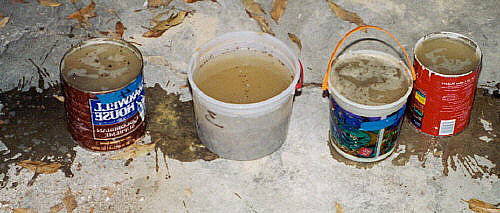
Then, we screened the mud in colanders
to find the fossils.
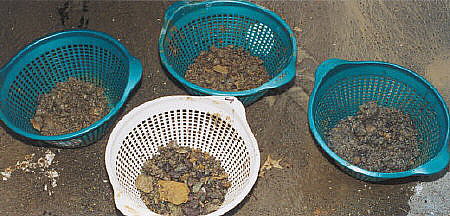
Then, we spread the mud out on paper bags
with numbers on them to dry.
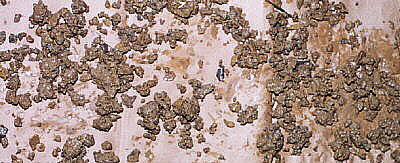
Next, we picked out all of the fossils and
put them in numbered boxes.
Finally, we identified and counted all of the fossils
and graphed our results.
Results
There were different fossils in each layer. Layer
number 2 had the most fossils, layer 1 was next,
layer 3 was third and there were no fossils in layer 4.
Crinoid pieces were the most common fossil in all of
the layers. Snails were more common in the top layers
and cephalopods were more common in the bottom layers.
Why weren't there any fossils in the bottom
layer?
Maybe there were only plants living there then or
maybe the fossils washed away from that area before
the ground hardened.
Number of each kind of fossil in each area
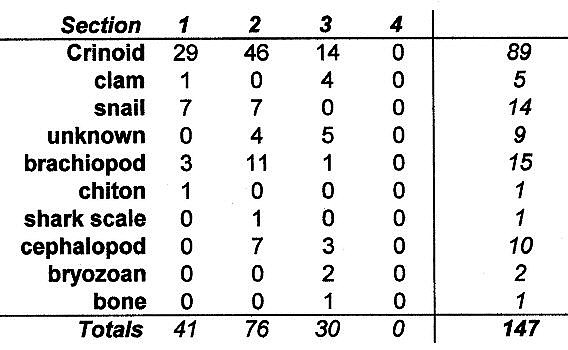
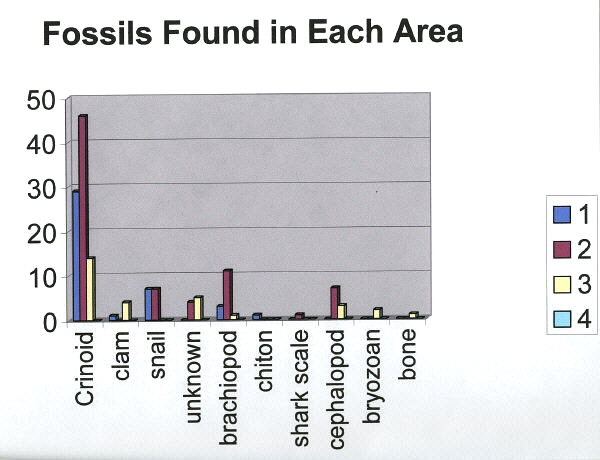
Special thanks to Stephen Garrett
and Drew Jones
for the loan of their Log Book.
St.
Louis Pennsylvanian Fossils of the Altamont Formation